#cycladic culture
Photo

A CYCLADIC MARBLE FEMALE TORSO
LATE SPEDOS VARIETY, EARLY CYCLADIC II, CIRCA 2500-2400 B.C.
4 7⁄8 in. (12.3 cm.) high.
#A CYCLADIC MARBLE FEMALE TORSO#LATE SPEDOS VARIETY EARLY CYCLADIC II CIRCA 2500-2400 B.C.#archeology#archeolgst#ancient artifacts#history#history news#ancient culture#ancient civilizations#cycladic culture#cycladic art
32 notes
·
View notes
Photo

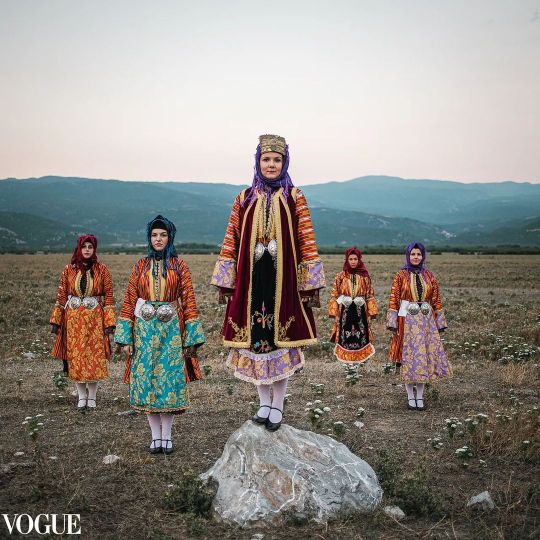
Photos from Michael Pappas’s “Mitos: The Thread of Greece” project for Vogue.
Sifnos, Cyclades islands
Stefanovíkio, Magnesia, Thessaly
#greece#photography#tradition#culture#vogue#traditional clothing#vintage#fashion#folk dress#Folk Clothing#historical fashion#greek culture#traditional dress#sifnos#cyclades#cycladic islands#stefanovikio#magnesia#thessaly#mainland#greek islands
488 notes
·
View notes
Text



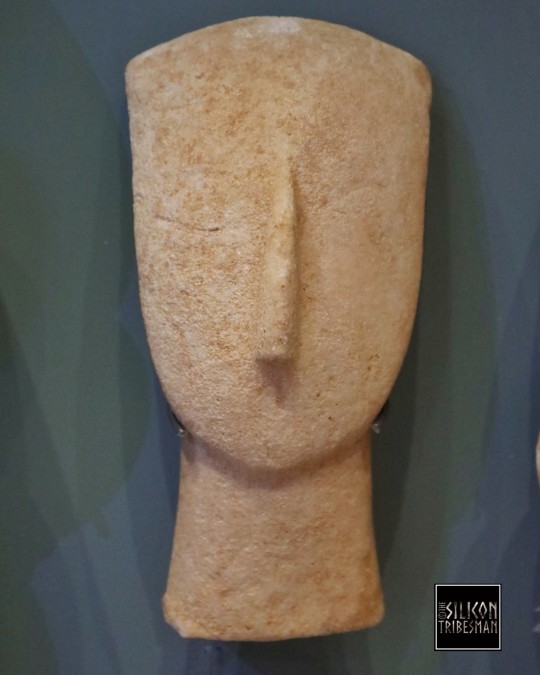


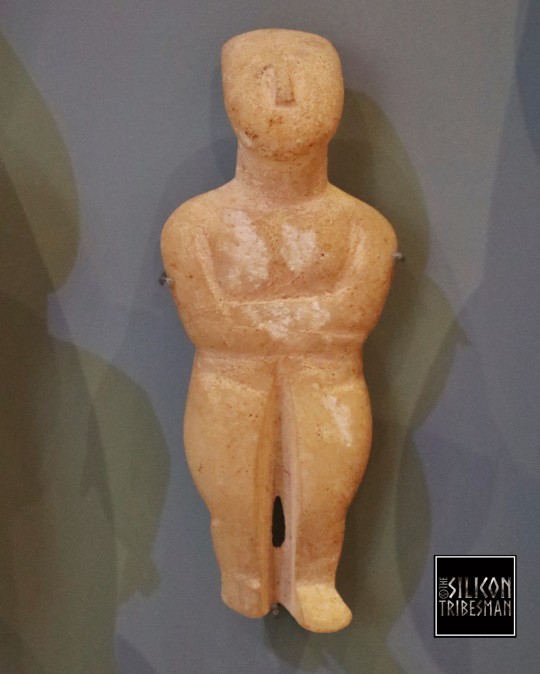

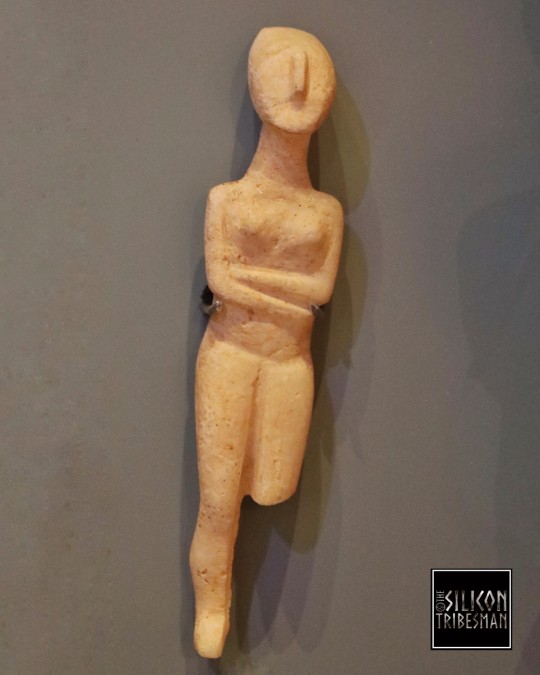
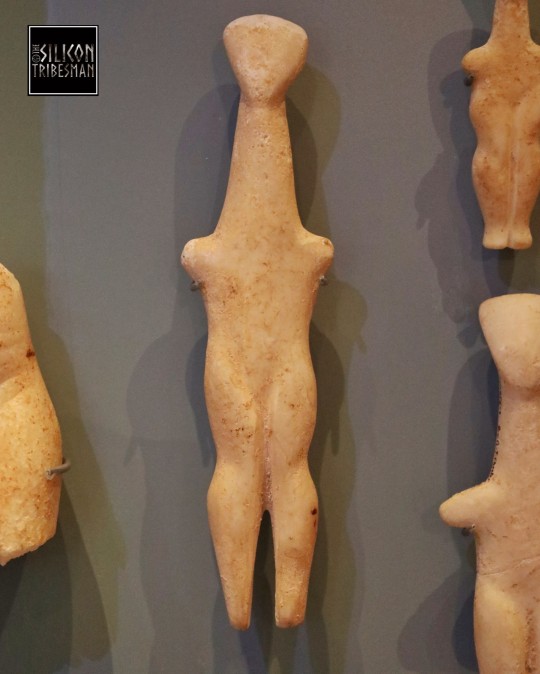
Cycladic Figurines of Ancient Greece, 4th and 3rd Millennium BCE
Most of the marble figures were sculpted in the Cyclades during the late 4th and 3rd Millennium BCE. The sculptors used simple tools, like obsidian for cutting and emery for polishing.
Found in settlements and tombs, these figures may have served as representations of the dead, of gods and goddesses and their followers or as offerings and amulets.
When the figures were first discovered, some still bearing traces of painted decoration, they were generally considered crude and ugly. Later in the 20th century their simple form influenced artists like Picasso, Modigliani and Moore.
Ashmolean Museum, Oxford
#cyclades#cycladicfigures#archaeology#ancient craft#ancient cultures#ancient living#ancient sites#greece#votive#offering#marble#statuette#figure
110 notes
·
View notes
Text
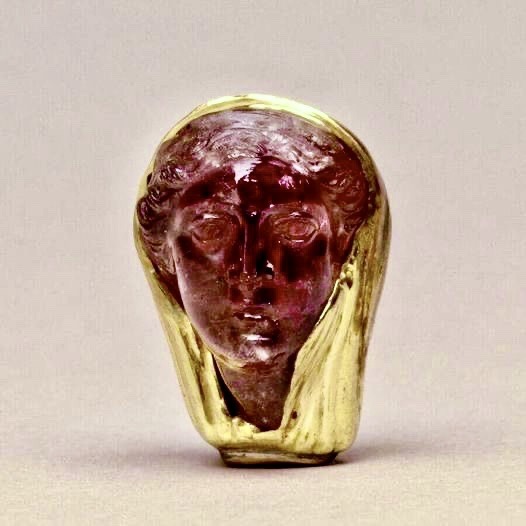
Carved Figurine, Greece, 17th c. BC.
#porcelain suit#historical artifacts#artifact#artifacts#greek aesthetic#greek posts#greek art#greek gods#greece#ancient greek culture#ancient greece#ancient art#ancient statue#statues#cyclades#greek quotes#greek#history#carved#carved stone#gold jewelry#gold
20 notes
·
View notes
Text
Exploring Greece in the Pre-Homeric Era

View On WordPress
#aegean#Agamemnon#archeaolgy#archeology#art#asia minor#corinth#crete#culture#cyclades#egypt#epic#german#greek#helen#history#homer#homeros#iliad#knossos#mesopotamia#minoan#minoan crete#mycenae#poem#prehistoric#Schliemann#travel#troy#turkey
2 notes
·
View notes
Text
The Oxford Handbook of the Bronze Age Aegean
#books#aegean bronze age#prehistory#archeology#mainland greece#crete#cyclades#minoan civilization#minoan crete#minoans#minoan religion#minoan culture#mycenaean greece#mycenaeans#mycenaean religion#mycenaean culture#this book is freaking huge#but it is very thorough and well structured#and it includes far more than my tags suggest#greek history
6 notes
·
View notes
Text
Spotlight Art – History – Marble Female Figurine – Cycladic Art & Culture – Greece (The Cyclades Islands)
Marble Female Figurine – Cycladic
Early Cycladic Art and Culture
The Cycladic Marble Female Figurine (H. 8 7/16 in. / 21.4 cm) from the early Greek Neolithic period dates from c. 4500 – 4000 BCE – The Metropolitan Museum of Art, New York.
The generous, fleshy proportions of the symmetrically carved figurine with her exaggerated buttocks and thighs are typical of the period. The figurine’s slim…

View On WordPress
#Art#Art Music Photography Poetry Quotations#Cycladic Art and Culture#Female Statuette#Goff James#Goff James Art Music Photography Poetry Quotations#goffjamesart#Greece#Haiku#History#Poem#Poetry#Sculpture#Senryū#Talisman
1 note
·
View note
Text
uhm he'll be having some pumpkin soup on your dashboard now... thank you.

(first time I ever attempted to animate something with gimp lol. same figurine as yesterday.)
(Zoomorphic vase in the shape of an animal, a little bear or a hedgehog, holding a bowl. Chalandriani, Syros. Early Cycladic II period, Keros-Syros Culture (2800-2300 BC).
2K notes
·
View notes
Text
Prehistoric Figurine of a Harp Player, from the Cyclades (Greece), c. 2700-2300 BCE: this figurine was shaped from a block of solid marble and then slowly sanded into form using pumice and emery

The figurine depicts a musician with a frame harp, an instrument that originated in the Near East and then later spread to the peoples of the Aegean. A sound box forms the section along the base of the instrument, and a small protrusion can be seen near the top of the harp's frame; some experts have argued that this protrusion might represent an ornamental carving of a waterfowl's head, while others argue that it represents a musical extension that facilitates the projection of sound (a feature that often appears on the stringed instruments of the ancient Near East).
This piece measures 35.8cm (about 14 inches) tall.
Musical performances like this are rarely depicted in Cycladic artwork. Depictions of male characters are similarly rare, representing only 5% of the Cycladic sculptures that are known to exist. When male figures are depicted, however, they are frequently shown playing musical instruments, as seen here.

Figurine of a Harpist, c. 2800-2700 BCE: a similar example of a Cycladic sculpture that features a musician with a frame harp
The Museum of Cycladic Art provides a more detailed explanation of the process by which these figures were created:
As we can deduce from the few unfinished figurines that have been discovered so far, the first step in the process was to roughly shape the raw piece of marble into a figure by the impact of a mallet. Emery powder was then used to abrade the surface until it obtained the desired shape and size. Once the desired shape was achieved, the surface was smoothed carefully before the fine work of carving the details started. At the end, the figurine was polished to a high degree that is still amazing.
And according to The Met:
Many of these figures, especially those of the Spedos type, display a remarkable consistency in form and proportion that suggests they were planned with a compass. Scientific analysis has shown that the surface of the marble was painted with mineral-based pigments—azurite for blue and iron ores, or cinnabar for red.
The Cycladic Islands (also known as the Cyclades) are a group of about 30 separate islands in the Southwest Aegean, off the coast of mainland Greece. These islands contain a wealth of natural resources, including marble, emery, pumice, obsidian, and an assortment of precious metals. The prehistoric peoples of the Cyclades made use of these resources for many different purposes, but the marble figurines/sculptures that they crafted during the Bronze Age are perhaps their most famous creation.
The vast majority of these figurines are stylized depictions of the female form. The cultural significance of the sculptures remains unclear; they may have simply been created as decorative pieces/artwork, without any additional function, or they may have been used as fetishes, totems, religious idols, grave goods, or votive offerings.
Sources & More Info:
The Getty Museum: Figurine of a Harp Player
The Met: Cycladic Harp Player
The Met: Early Cycladic Art and Culture
The Museum of Cycladic Art: Techniques
#archaeology#history#artifact#ancient history#prehistoric art#art#sculpture#music#greece#cycladic#bronze age#anthropology#harp
1K notes
·
View notes
Text



my island wr 🌺
i created this wr a year ago when i was missing my favorite country (greece).
the island is a mix of all med countries but leans heavily on greece.
think of the hottest, most vibrant, sun drenched island. you can hear the gentle breeze, the hum of cicadas, and the lull of music nearby. it smells of sweet flowers, herbs and ocean.

me 🌺
absolutely no idea about my age or appearance. this isn’t a dr with a backstory. it’s just me existing in a pretty place. i probably look like myself but better.
i can speak any language i want to, and have any skill i want.
i can enter any dr from here instantly.

culture 🌺
island name: thalassia
language: something like greek (or just greek)
architecture: cycladic
music: mix of greek and turkish
food: greek and turkish
people: it isn’t just an empty world - people go about their life. there’s plenty of people to meet and interact with.
no one from my cr will be there.

my house 🌺
i have a house that is always clean, and has anything i’ll ever need. and the best view ever ofc. i have a quad to go over the entire island.
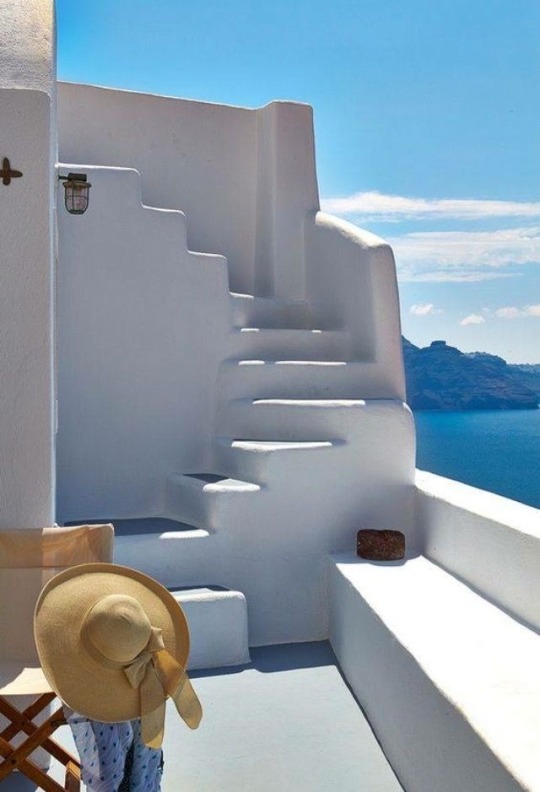

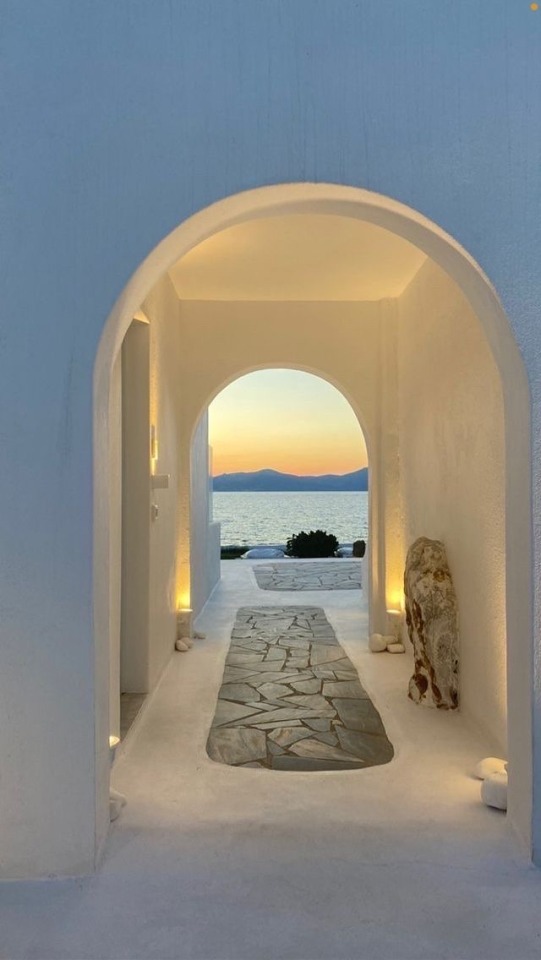
#reality shifting#reality shift#shiftblr#shifting#shifttok#shifters#shiftersroom#shifting methods#shifting motivation#shifting community#shifting blog#waiting room
34 notes
·
View notes
Note
Hi Theitsa😊 hope you are having a good day 🌿 I was wondering if there are any cultural differences between mainland Greece and the islands? Is the mainland more culturally similar to other balkan countries?
Hello! I also delayed answering this because the answer to this would be huge, and I decided to narrow it down. To put it simply, Greece doesn't have "islands". Greece has "clusters of islands" and depending on the cluster, the culture and history can be different. The history and sub-culture of the Heptanese is veeery different from that of the Dodecanese.
The mainland is more similar to other Balkan countries than say, Crete, however the islands close to the mainland also have this Balkan culture.
Sorry that I couldn't give more specific info but a more targeted question would help me to narrow it down. If you want to learn something more specific, let me know! But the internet is also a good place to search about the history of these island clusters and get a general idea about influences from other countries. Is there any cluster or island that interests you in particular?
@gemsofgreece has the regions nicely categorised in her blog. I also have the respective tags #crete , #cyclades and so on if you want to take a look.

9 notes
·
View notes
Photo






A CYCLADIC MARBLE HEAD
EARLY SPEDOS TYPE, EARLY CYCLADIC II, CIRCA 2600-2500 B.C.
5 3⁄8 in. (13.6 cm.) high.
Through comparison to complete folded arm female figures, the dimensions of this impressive head suggest the original length of this example would have been nearly 21 in. (55 cm.) long. The style of this Early Spedos head shares many characteristics of figures assigned to the Steiner Sculptor, including the defined triangular nose, the comparatively deep chin, the grooves at the join of the neck and the elegant backward arch of the forehead (compare no. 33 in P. Getz-Preziosi, Early Cycladic Art in North American Collections and pls. 69-70 in P. Getz-Gentle, Personal Styles in Early Cycladic Sculpture).
Although rarely preserved, most Cycladic sculpture of the Spedos type would have originally been richly painted in red and blue pigment. This figure is remarkable for its preservation of traces of original red pigment on its cheeks, in a pattern often referred to as a “tattoo” of dots.
#A CYCLADIC MARBLE HEAD#EARLY SPEDOS TYPE EARLY CYCLADIC II CIRCA 2600-2500 B.C.#archeology#archeolgst#ancient artifacts#history#history news#ancient history#ancient culture#ancient civilizations#cycladic culture#cycladic art
5 notes
·
View notes
Photo

Mykonos getting prepared for Easter! Photo by Valantis M on Instagram.
#greece#europe#travel#wanderlust#architecture#church#christian orthodox#greek culture#mykonos#cyclades#cycladic islands#greek islands
55 notes
·
View notes
Text


Painted Reconstruction of the Cycladic Figurines of Ancient Greece, cast from original, 2800 to 2300BCE
Ashmolean Museum, Oxford
#cyclades#archaeology#figure#painted face#votive#offering#ancient cultures#ancient living#ancient craft#crafts#sculpture#marble#symbols#female form#body art
58 notes
·
View notes
Text

The pomegranate is of great importance to the Greek culture, symbolizing prosperity, fertility and good luck. It's especially used as decoration and as a charm in the New Year.
These are made and sold by the Cycladic Museum of Greece.
61 notes
·
View notes
Photo

Hestia Residence in #Mykonos, Greece by Kipseli Architects @kipseliarchitects. Read more: Link in bio! Photography: George Messaritakis @gmessaritakis, Andreas Bekas In Mykonos, a famous Greek island that gradually builds a liberal Cycladic culture, Kipseli Architects are called to renovate and combine two old Mykonian homes in Chora (town) and transform them into one luxurious contemporary villa. The owner, an investor of East Asian origin, is a Mykonos worshiper as well as a jewelry designer inspired by nature… #chora #greece #архитектура www.amazingarchitecture.com ✔ A collection of the best contemporary architecture to inspire you. #design #architecture #amazingarchitecture #architect #arquitectura #luxury #realestate #life #cute #architettura #interiordesign #photooftheday #love #travel #construction #furniture #instagood #fashion #beautiful #archilovers #home #house #amazing #picoftheday #architecturephotography #معماری (at Mykonos, Greece) https://www.instagram.com/p/CnBPlYqsJ5W/?igshid=NGJjMDIxMWI=
#mykonos#chora#greece#архитектура#design#architecture#amazingarchitecture#architect#arquitectura#luxury#realestate#life#cute#architettura#interiordesign#photooftheday#love#travel#construction#furniture#instagood#fashion#beautiful#archilovers#home#house#amazing#picoftheday#architecturephotography#معماری
49 notes
·
View notes